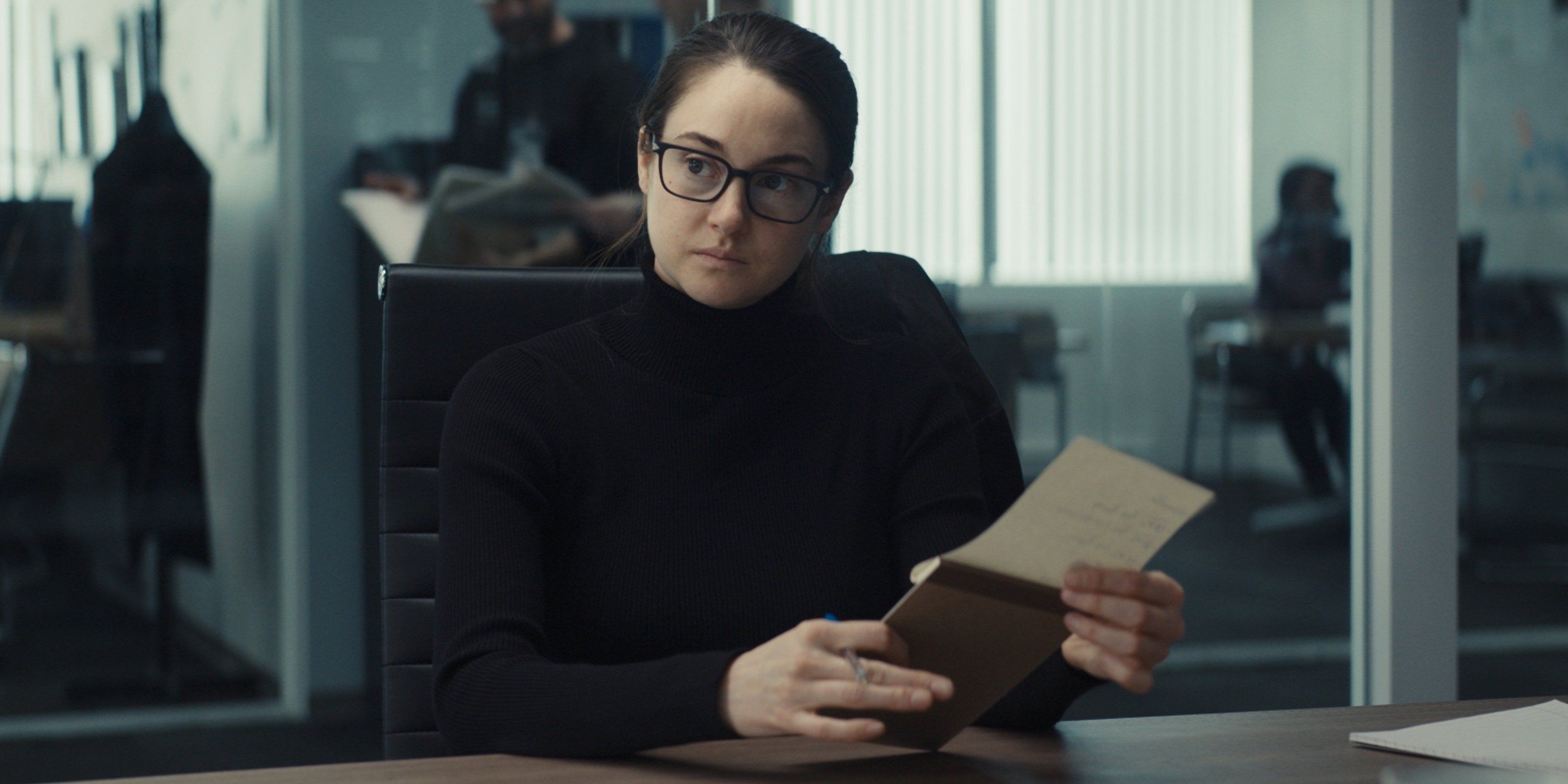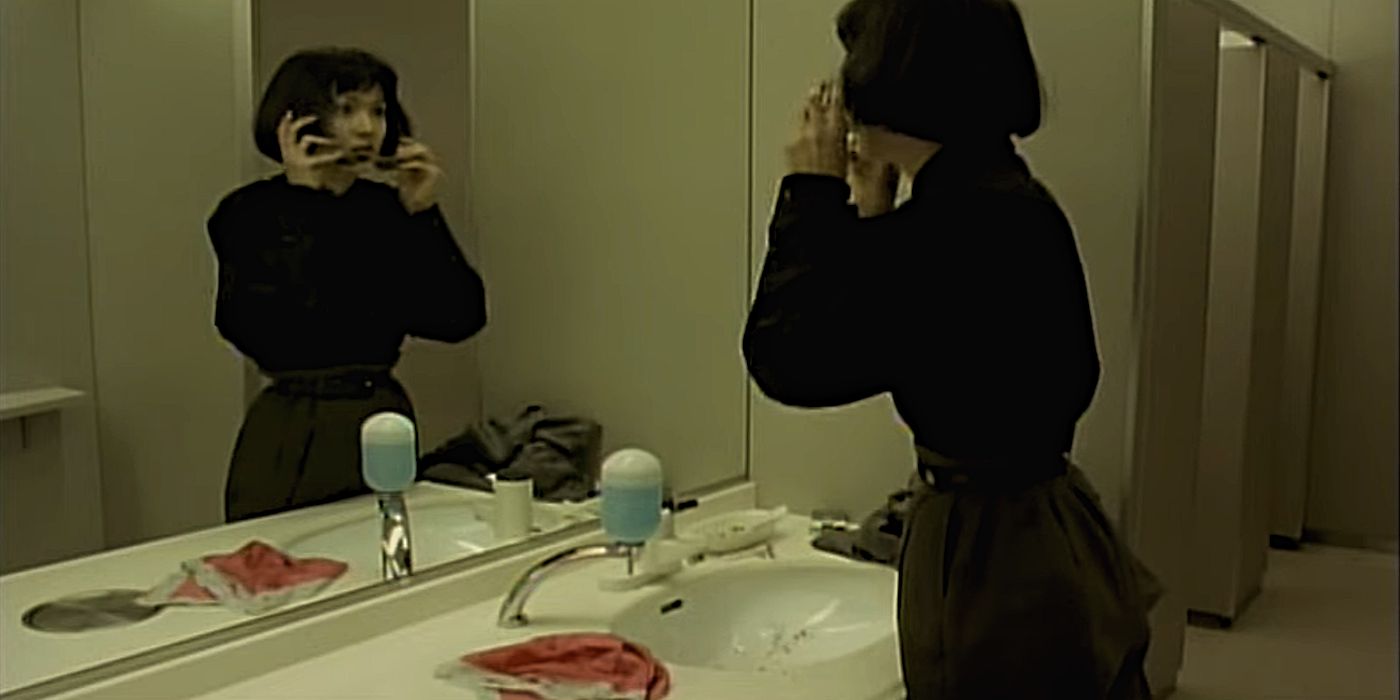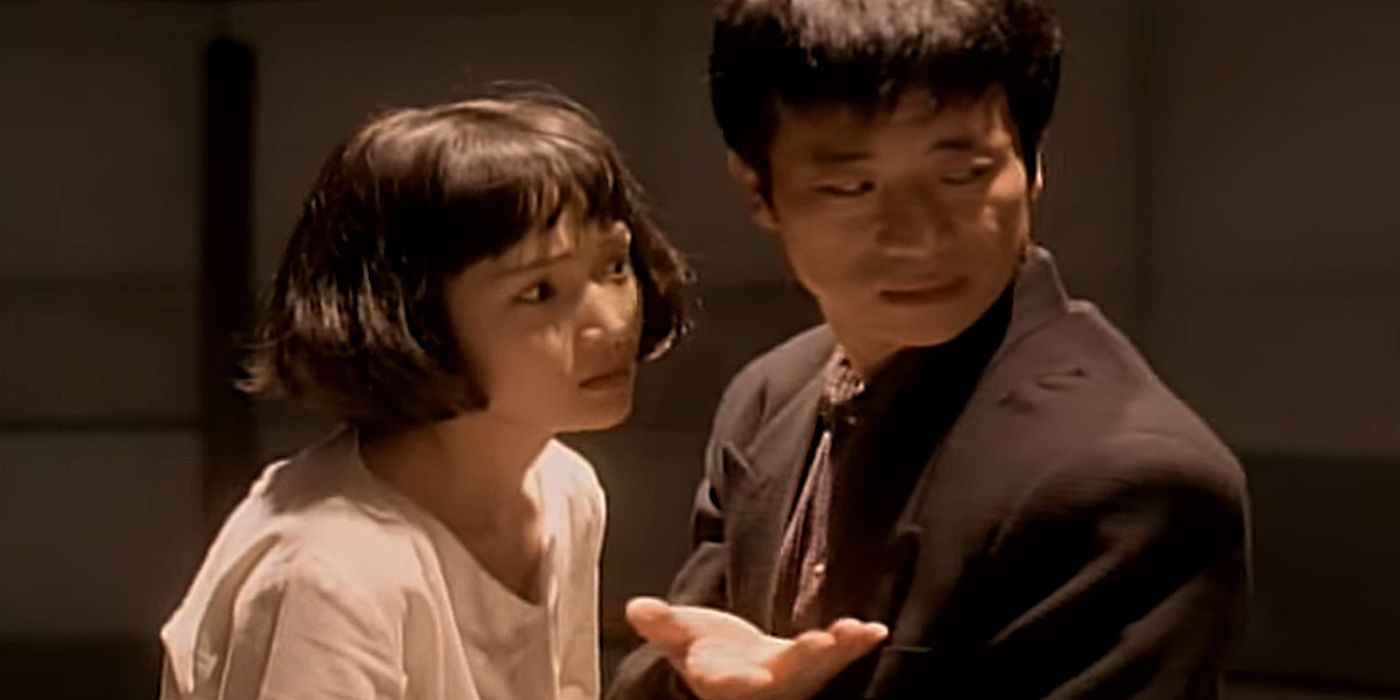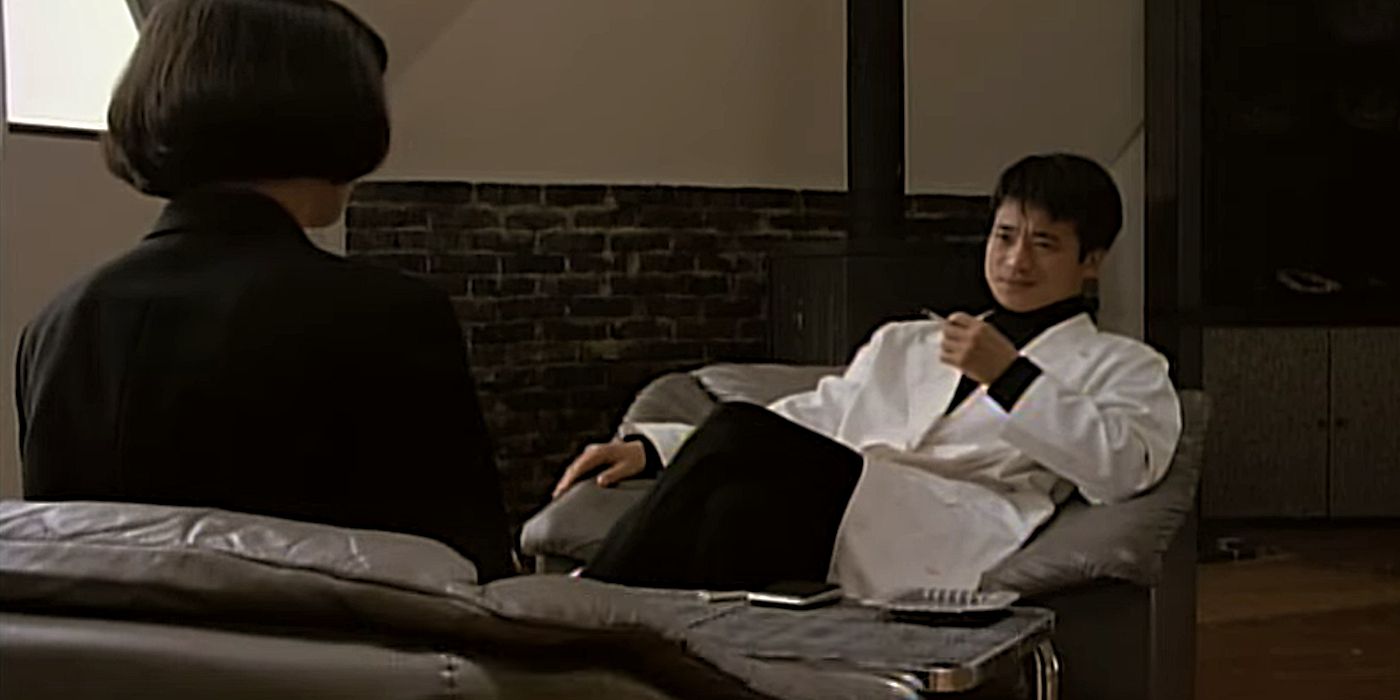The Big Picture
- Dr. Setsuko Suma investigates Tokyo subway murders, suspects former lover for controversial brainwashing techniques.
-
Angel Dust
uses sound design and cinematography to create a disturbing atmosphere of psychological tension. - The film’s signature Gakuryu Ishii style, combining punk visuals and glitchy cuts, contributes to the psychological horror element.
It’s 1991. The world has just experienced The Silence of the Lambs, a psychological horror film that would later become one of the most influential films of all time. This is largely due to Anthony Hopkins’ brilliant performance as Dr. Hannibal Lecter, which presented to the public a unique vision of a killer with refinement. Lecter wasn’t a hideous monster lurking in shadows; he was well-educated, well-spoken, and rather charismatic, able to persuade people with ease using his skills as a psychiatrist. As a character, Hannibal Lecter tapped into a new fear for many: villains hiding beneath the facade of the trusted. Fast forward a few years to 1994, and Japanese director Gakuryu Ishii taps into this fear with his oft-forgotten gem, Angel Dust, a psychological crime horror film that’s gritty, gripping, and mind-bending. It’s about time for this film to emerge from the shadows to intrigue a new generation because we can always use a little more psych horror in our lives.

Angel Dust (1994)
- Release Date
- September 23, 1994
- Director
- Gakuryu Ishii
- Cast
- Kaho Minami , Takeshi Wakamatsu , Etsushi Toyokawa , Ryoko Takizawa , Masayuki Shionoya , Yukio Yamato , Tomorowo Taguchi , Toshinori Kondo
- Runtime
- 117 Minutes
‘Angel Dust’ is a Crime Horror That Takes Psychology to the Extreme
Angel Dust is the story of forensic scientist Dr. Setsuko Suma’s (Kaho Minami) struggles to find who is behind a series of murders. A girl is killed each Monday at 6 PM on a crowded train using a rhodotoxin administered via needle. She’s chosen for the case due to her expertise in abnormal crime, as she is able to get into the mind of a killer by examining the victim. Her investigation leads her to conclude that the victims didn’t know each other but were instead connected by their feelings of isolation.
The investigation leads her to the Re-Freezing Psychorium, a facility headed by her former lover and disgraced psychiatrist Dr. Aku Rei (Takeshi Wakamatsu). Aku studies and practices a technique called “reverse brainwashing,” which he used to deprogram a member of the Ultimate Truth Church cult named Yumiko, who was also the first victim of the murderer. Setsuko visits him to get information, but Aku gives her nothing, instead asking her questions and provoking her. Setsuko deduces that the killer must be colorblind, as all the victims were wearing red when they were killed, and realizes that the killings took place in spots that created the letter “A” on the map, helping her find where the killer would strike next. She becomes increasingly irritable and frustrated, neglecting her husband, Tomoo (Etsushi Toyokawa), and receiving calls from Aku telling her that she is becoming like the killer by letting them into her mind. Between scenes of Setsuko’s investigation, Aku watches films of the deprogramming of a patient named Yuki (Ryoko Takizawa), who has been traumatized by the death of her mother, which she believes is her fault because she let go of her mother’s hand due to a bee sting.

Related
This Shailene Woodley Thriller Is a Modern-Day ‘Silence of the Lambs’
Sans human face masks.
Eventually, Aku asks Setsuko to come to the Re-Freezing Psychorium, where she is held captive in a room playing a video of Aku that reveals that he has been brainwashing her throughout the entire film. This sends Setsuko over the edge, and she admits that she and Aku committed the murders, though this is not actually the case and instead a ploy by Aku so he can reunite with Setsuko. When Setsuo is hospitalized, Aku kidnaps her, and they are threatened by Yuki, who is angry with Aku for manipulating her by implanting false memories of her childhood. These false memories were supposed to quell her murderous nature, but they instead exacerbated them, and she began committing murders using a needle to replicate the sting of the bee that she believes caused her to let her mother fall to her death. Aku convinces Yuki to kill herself using lines from the memories he implanted. The movie ends with Aku and Setsuko together as the police arrive, and Yuki is declared the murderer.
‘Angel Dust’ Will Make You Feel Like You’re Being Stalked
Angel Dust is one of those films that lays the groundwork from the very beginning. From the moment we meet Aku, we can see the subtle ways he toys with Setsuko. The questions he asks are solely meant to sow the seeds of doubt and manipulate her into believing what he wants her to, even if we aren’t sure what that is yet. We’re shown his small motions — particularly finger tapping — in close-up shots. We don’t know at first what the purpose is, but as the film progresses, we see it each time he speaks to her, and the timing of the taps matches up with clicking noises we hear in other places: the clock as it counts down to the murders, the click of a photo machine as it quickly goes through photos from evidence and autopsies.
These things follow Setsuko throughout the film. They’re inescapable. That’s why there’s a feeling of being followed throughout the entire runtime. Periodically, there’s the contact — phone calls, visits for work — that’s quick, but they follow Setsuko, slowly breaking her down and making her question everything. The film does an incredible job at building the tension in a way that’s slow and gradual, but traceable in every moment, and a large part of it is due to the focus on psychology and how anxiety-inducing it is to know that some people have this knowledge of the human mind and can use it at any moment to take someone’s sense of self. It’s especially interesting to see Aku’s controversial practices in comparison to brainwashing done by cults, as they both serve similar goals in the end.
The Sound Design of ‘Angel Dust’ is Amazingly Eerie
The other reason the tension of the film works so well is because of the sound. The soundtrack was already a perfect fit; it’s a good mix of these synth and orchestral sounds with a bit of punk rock mixed in that adds a lot of some of the tensest moments. The real star, though, is the sound of the environment. Scenes often have this dull roar beneath them, especially when we see characters walking around the city or riding the train. These moments don’t necessarily need sound to make their point. Just the visuals of so many people and so much activity make the thrill rise and provide that confusing, somewhat claustrophobic feeling. But the addition of the vague background noise makes the scene disorienting, especially in the latter half of the film. We see Setsuko having trouble keeping up because of her preoccupation with Aku, and that dull but encompassing noise helps us feel and hear what she likely is.
However, the entire film emphasizes noise in many ways that increase the tension. Scenes on the train — particularly the opening scene — make it a point to let you hear every noise. The music the victim is listening to, the squeak of handles, the murmur of conversation, the whistled tune, it’s all there to build anticipation and make you expect something huge, but we just see a woman collapse after. There’s no blood or grand kill, but it’s still frightening.
‘Angel Dust’ Has That Signature Gakuryu Ishii Style To Elevate It
The sound of the film isn’t surprising coming from Gakuryu, though. He was originally a director for punk films, which love to make use of industrial music and a soundscape full of intense noise. However, his punk film style also extends to the cinematography of Angel Dust in the best way. Gakuryu is known for fast and glitchy cuts, and those are seen throughout Angel Dust, often when going between characters and objects (like clocks, screens, and photos) and when we see the final break in Setsuko and the scene glitches in and out. His style of filmmaking was practically made for psychological horror; it’s a little gritty and disorienting at times, it loves the little details of a scene, and it makes the audience feel like they’re the prey as much as the characters are. If Angel Dust holds nothing else for you, it’s a fantastic study in the punk style.
In general, Angel Dust is a good movie. It’s suspenseful, using every tool to its advantage to create tension and fear, and it knows how to lay the framework of destruction. We know early on that there’s something wrong. It comes in pieces until the end, and by then, it’s too late, and it leaves you wondering if you could be the victim of something like that. We’ve all broken up with a bad ex, or slighted a person without realizing it. What’s stopping them from following our moves for years, lying in wait for the right moment to strike? Angel Dust has the answer: absolutely nothing.
Angel Dust is not available on streaming at this time. It is only available on VHS from Amazon.
Buy on Amazon



